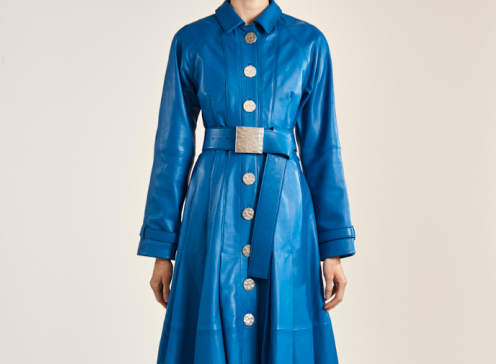By extracting silk’s chief protein, fibroin, we’ve made silk even safer for the human body.
We often describe Activated Silk™, our green chemistry platform, as pure silk protein that’s been liquefied. That’s true, of course. But molecularly speaking, that’s only half the story. Rather, it’s only 80 percent of the story—because we’re intentionally using only 80 percent of the silk molecule.
Silk fiber is mostly made up of two proteins, sericin and fibroin. Sericin is the protein “glue” that holds the fiber together; fibroin is the protein that gives silk its characteristic strength and flexibility. And it’s the fibroin—which makes up roughly 80 percent of the proteins in raw silk—that we’re after. It’s the heart of everything we do at Evolved By Nature.
Raw silk, which contains both sericin and fibroin, has been implanted into the human body for centuries, and it is safe for most of us. But some people have a sensitivity to raw silk. When our co-founders published their groundbreaking research on silk as a biomaterial, one of their principal findings was that in cases where people had an adverse reaction to silk, it was the sericin, not the fibroin, that triggered the reaction.
With that knowledge in hand, along with our understanding of the innate flexibility of the fibroin protein, our goal became finding a way to remove the sericin from silk and be left with pure fibroin. We do that by beginning with cocoons discarded by other industries. The textile industry relies on cocoons made of a single, unbroken thread, meaning that any cocoon with enough damage to prevent this seamless unspooling is useless to them—and that’s where we come in. We’re not after silk fiber; we’re after silk protein, which is intact even in cocoons that are useless to the clothier. So we’re able to take cocoons discarded by other industries and turn them into Activated Silk by isolating their fibroin.
How we do it: We wash the discarded cocoons in a saltwater bath and then rinse them, a process that helps us remove the sericin. Once we have the dried fibroin, we liquefy it—again, using a simple saltwater solution—and then remove the salt. What we’re left with is pure, natural silk in liquid form. Or rather: pure, natural fibroin in liquid form.
We’re the only company working with fibroin in this way, meaning that if you see other companies claiming to use silk protein, they’re either including sericin in their formulas or bioengineering silk protein in a laboratory (think GMO silk). We weren’t the first to isolate fibroin, but we were the first to figure out a way to liquefy and stabilize the isolated protein. In doing so, we unlocked fibroin’s full potential, allowing it to have the qualities you might associate with silk—strong, light, and luxurious—and, simultaneously, properties you never dreamed silk could have.
